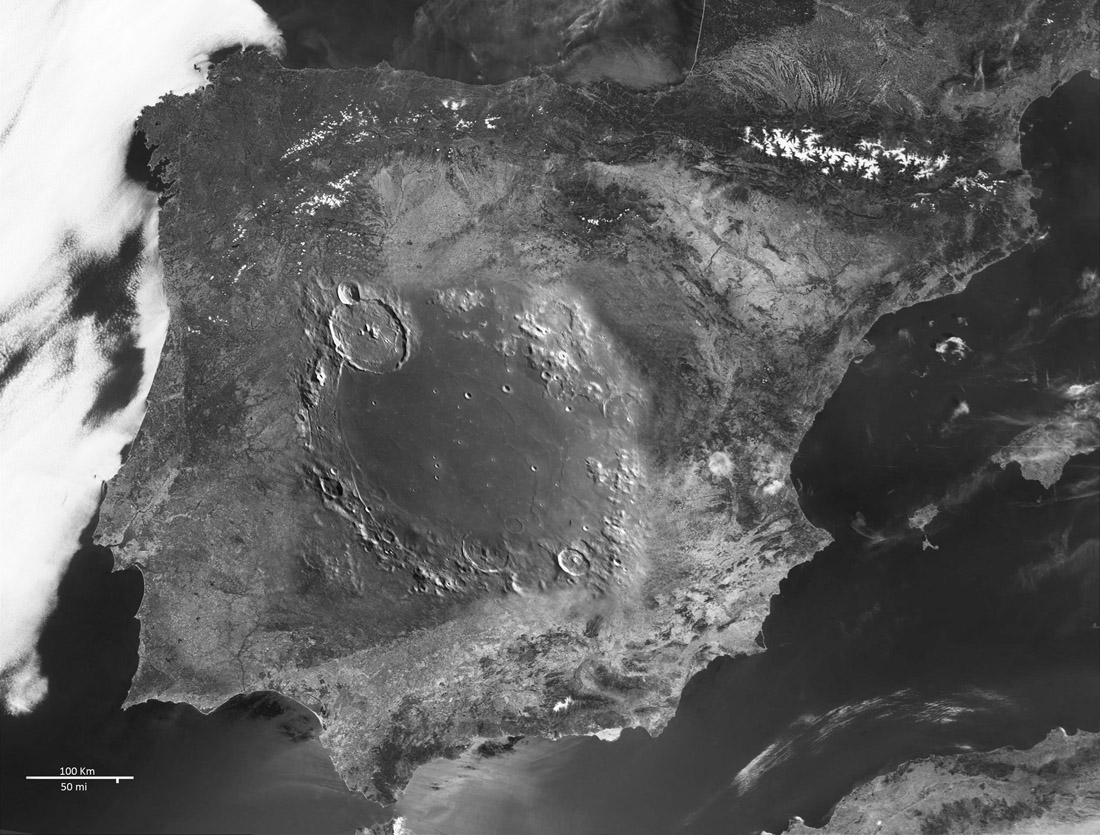September 28, 2013
Extreme Makeover

inset image by " rel="nofollow Francisco Javier Pobes Serrano, Spain; outer image from NASA
Although there are two likely " rel="nofollow impact craters in Spain that are large (40 and 80 km in maximum length) and relatively young (35-40 my.) they are nearly invisible morphologically. Javi decided to see what a big impact crater with well preserved morphology would like like in Spain. A lunar field of view that takes relatively high magnification at the telescope represents an area that would dominate the Iberian Peninsula if magically transplanted there. Multiple major cities could fit with 110 km wide Gassendi, and Mare Humorum would be a larger smooth surface than anywhere in Spain and perhaps anywhere else on Earth's continents, except parts of Antartica. Three to four billion years ago the Earth must have had many vast expanses of relatively flat maria, but they have all been terraformed away by plate tectonics, alluvial and aeolian forces. There could be - pure speculation - remanents of large basins in many terrestrial landscapes. For example, in east-central Spain from Madrid to Albacete there is a broad plain, a sedimentary basin. The Paris Basin is another large one, and the " rel="nofollow Michigan Basin is similar. Such large basins have subsided 3-4 km, are filled with sediments, and have origins that are hard to decipher. None have obvious impact signitures (impact melts, coesite, shatter cones) but it is tempting to compare them with lunar basins such as Humorum.
" rel="nofollow Chuck Wood
Technical Details
Celestron C 9,25, Camera Point Grey Chamaleon, Registax 6, Photoshop CS5.
(You may notice some landscape rearrangement due to unintended magic with Registax.)
Related Links
21st Century Atlas chart 23.
Javi's " rel="nofollow website



